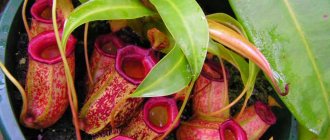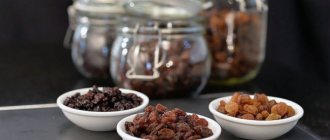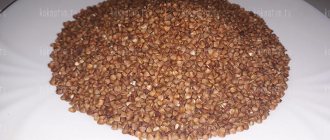Description
More than 100 years ago, the English navigator Soleirol discovered an unknown plant on the islands of Corsica and Sardinia, which was later named after him.
In its natural habitat it is a low-growing shrub that covers the ground. Grows under the shade of a tree or on mountain slopes. Botanists have classified Soleirolia: the nettle family, the genus Soleirolia, the species Soleirolia soleirolii, which is the only one. Scientists have developed several varieties of helxina:
- Argentea;
- Green;
- Variegata;
- Aurea.
Saltirolia is a low plant that covers the ground. It has elongated leaves the color of young green foliage, up to 0.5 cm in diameter, and they are arranged in pairs. Fragile and thin stems do not exceed 20 cm.
Flower growers select original places for soleirolia to grow: a terrarium, a bottle garden, a hanging flowerpot, in pots with tall flowers. Neighborhood with low plants is undesirable, since saltwort will destroy the plants.
Bloom
In an apartment, soleirolia blooms very rarely and never bears fruit. Under natural conditions, its flowers are small, whitish, faded, after which reddish berries are formed, which contain seeds.
Microclimate
Gelksina is a heat-loving plant, the optimal growth temperature is approximately +18.25°C. In summer it is allowed to take it out onto the balcony, and in winter it must be protected from gusts of wind and hypothermia. Create diffused light for the flower; on cloudy days, use artificial lighting. Successful growth directly depends on the conditions of detention, so follow a few rules:
- the soil substrate should contain pebbles, sand, turf;
- Spray your pet in the morning and evening, and after watering, drain the excess liquid;
- feed the plant with mineral fertilizers once every 14 days, and in the cold season once every 30 days;
- Soleirolia propagation occurs vegetatively.
Usage
With the help of gelxina you will create comfort in any room. It looks great either alone or in combination with tall plants. Used to hide the soil. Choose a neighbor so that the conditions of care are approximately the same.
In the garden, using various varieties of helxins, they create openwork patterns of any complexity. This shrub will twine around any support you provide it, so you can make living figurines from it.
The smallest varieties can be grown in bottle gardens. This will be an original gift for any housewife.
Superstitions
Many flower growers are sure that helxina brings joy, harmony, and a positive mood to the house. When caring for a pet, a person gets rid of anxiety, nervous tension and even depression.
It is recommended to install soleirolia in the nursery, as it promotes sound sleep. According to the teachings of Feng Shui, it is not recommended to install it in the bedroom of spouses, as this will lead to a deterioration in the relationship between them. Her presence in the living room is also undesirable.
Place the flower in the niches of the cabinets, this way positive energy accumulates there and can fill the entire space of the room. The optimal neighborhood is a TV or computer, which is explained by the ability of gelxina to reduce electromagnetic radiation.
Signs and superstitions
It is recommended to purchase soleirolia to protect your home from the evil eye and damage. The plant can bring joy to the house and lift your spirits.
Gelksina is a culture with calm energy, so experts advise placing it in a children's room. The flower will have a calming effect on the child.
Saltirolia is an unpretentious ground cover plant. If you follow the requirements of the flower, even a novice gardener will be able to grow it. Even if for some reason the bush begins to disappear, the crop can be saved by propagating it by apical cuttings.
Saltirolia - care at home
Many lovers of indoor plants claim that caring for this flower is not too difficult. Of course, there are certain nuances. For example, a flower pot needs to be placed in the right place, watered often in the summer, and fed periodically.
Temperature
The culture develops well in summer at a temperature of 20-27 °C. In the warm season, a pot with a flower can be taken out into the open air, but on condition that the sun's rays do not fall on it.
In winter, the crop can withstand a temperature range from 8 to 15 °C.
Lighting
The flower can be placed either on a well-lit windowsill or in partial shade.
You need to make sure that the bush does not get direct rays of the sun, otherwise the leaves will get burned.
Attention! When kept in full shade, the shoots will stretch and the leaves will turn pale.
Watering
In spring and summer, the bushes are watered abundantly with warm, settled water. Excess liquid is removed from the pan a few minutes after irrigation.
In winter, saltwater is watered sparingly.
Soleroilia loves plenty of watering
Spraying
The crop loves high air humidity, so in the hot season it is sprayed with water from a spray bottle every day.
At temperatures below 20 °C, the bushes are sprayed 2-3 times a week.
Humidity
Dry air has a detrimental effect on saltwater.
To increase humidity, place a vessel with water next to the flower. It has a beneficial effect by placing a pot with a plant in a tray into which small stones are poured and water is poured to their upper level.
Priming
The culture is planted in a ready-made substrate for decorative foliage plants, purchased at a flower shop.
You can also prepare the soil mixture yourself from the following components:
- turf and leaf soil;
- peat;
- sand.
Attention! The soil needs to be steamed or calcined before planting a flower.
Saltirolia can be planted in a pot with tall plants
Feeding
Saltirolia is fed with mineral fertilizers for decorative deciduous plants. The procedure is carried out every 15-20 days, starting in March.
In autumn, the amount of fertilizing is reduced; in winter, plants are given a period of rest.
Trimming
If gelxina is used as a ground cover plant, pruning is not performed. It is needed to give the bushes the desired shape.
From time to time, old shoots dry out and need to be pruned so that the soleirolia retains its decorative appearance.
Important! Any pruning must be done with a sharp, disinfected instrument.
Description
The indoor flower Saltirolia is also known to us under other names - Helxine and Helxine. This ground cover perennial herbaceous plant of the Nettle family (Urticaceae) belongs to the Soleirolia genus. Its name comes from its discoverer, the navigator Captain Soleirol. There is only one species of this interesting plant. In the humid subtropical forests of the Mediterranean, Sardinia or Corsica, you can find entire glades covered with lacy carpets consisting of Helksina thickets. There are especially many of them in the shade of trees and along the banks of rivers and reservoirs, since this delicate green plant weaving along the ground does not like a lot of light, but prefers darker and more humid places.
Saltirolia is a low creeping herbaceous plant. Small oval leaves on short petioles are located in groups on long thread-like shoots. They have a glossy surface, rich green color and no more than 5 mm in diameter. For these leaves, this herb is sometimes called baby's tears, and sometimes - indoor duckweed. Its stems are very thin and fragile. The shoots branch heavily. The flowers of Soleirolia are not interesting - they are single, small (about 1 mm), faded white or cream in color. At home, it rarely blooms and never bears fruit. Soleirolia is very similar to another flower, Nertera, which blooms profusely and is strewn with bright red berries in the fall.
Under natural conditions, Gelksina spreads along the ground, but at home it is a lush, bizarre-looking oval or spherical bush. It has been cultivated for more than a hundred years. For decorative purposes, Saltirolia is grown in special low pots, where it forms emerald green balls. It grows well in hanging flowerpots, where its shoots, intertwined, hang down. You can give it any shape by cutting off excess shoots.
Common varieties
Echeveria - home care and reproduction
In nature, there is only one subspecies of this plant, which is called Soleirolia Soleirolia.
- Helxina soleirolia is a creeping ground cover plant, the stems of which are densely dotted with round leaves, not exceeding 0.5 cm in diameter. The stems can reach 20 cm in length, they are thin and very fragile. It grows greenery very quickly, covering the entire surface of the pot. Gelksina flowers are inconspicuous and light.
- Saltirolia Green is a variety that differs from the previous variety in size; its bush reaches up to 20 cm in diameter. The miniature variety is demanding of light and moisture, with a lack of which it loses its decorative effect, stretching out long stems that are almost not covered with foliage.
Varieties
The remaining types of soleirolia are the work of breeders who have worked hard on the decorative effect of this flower:
- the unusual Argentea variety boasts the silver color of its oval leaves;
- Variegata has green round leaves with a white edge;
- The Aurea variety has densely growing oval leaves of light green color with a golden tint.
For your information! People call the flower “baby tears” because of its small leaves.
The flower received its name in honor of its discoverer, the navigator and botanist J. Soyleroy. It was brought to Europe in the 19th century, and gained its popularity at the end of the 20th century, when small mixes of herbs and flowers became fashionable.
Home care
Despite the fact that soleirolia belongs to the southern heat-loving species, keeping it at home does not bring much trouble. However, growing this plant still has some peculiarities.
Watering
Seleyrolia needs to be watered frequently; it is a moisture-loving species in which constant moisture plays a key role in life. Therefore, the soil in the flowerpot is watered regularly. In summer and spring, the plant loves more intensive watering, therefore the procedure is carried out at least once every 2-3 days; in winter, the frequency of watering is reduced to 1 procedure every 3-5 days. For irrigation, use only soft, settled water at room temperature.
Important! The sown soil must be moistened daily, otherwise the germination of the sprouts will deteriorate. Water the flowerpots using top and bottom methods, alternately
Thus, it is possible to completely saturate the entire soil with water. This is one of the main requirements of the plant, since even a short drying of the roots leads to their withering and death. When watering, be sure to remember that seleyrolia does not like stagnant moisture, so excess water must be removed from the flowerpot
Water the flowerpots using top and bottom methods, alternately. Thus, it is possible to completely saturate the entire soil with water. This is one of the main requirements of the plant, since even a short drying of the roots leads to their withering and death. When watering, be sure to remember that seleyrolia does not like stagnant moisture, so excess water must be removed from the flowerpot.
Fertilizer application
This ornamental bush responds best to fertilizing with organic fertilizers, especially during the active growing season. To do this, add a liquid solution of mullein or chicken droppings (1:15) to the flowerpots. They can be replaced with “Peat Oxidate” (1% solution) or other organic preparation for cultivated plants. In summer, pots are fertilized no more than 2 times a month, with an even interval between each procedure. In winter and late autumn, the soil is fertilized less often, no more than once a month.
Trimming
This home bush does not require mandatory pruning; it is an evergreen plant with a long life cycle. But in order to achieve the necessary decorative value, it will still need to be trimmed. Sanitary removal of shoots is carried out as necessary; first of all, old or faded shoots and leaves are removed, which helps to rejuvenate the bush and prolong its viability. Decorative pruning is performed no more than once a month.
Transfer
Flower transplantation is carried out as needed, but not more than once every 2 years. The most favorable period for this period is early to mid-spring. At this time, the plant has the most active metabolism, which has a beneficial effect on its adaptation to new conditions. To do this, use deep garden containers made of plastic, metal and glass. The size of the new pot must be 7–10 cm larger in diameter than the rhizome, otherwise the feasibility of the procedure is reduced. For replanting, use a soil mixture prepared from equal parts of turf, leaf soil and river sand.
Find out how and when to replant indoor plants.
Use only sterile soil.
Disinfect it:
- roasting in the oven for 20–25 minutes, at +125°C;
- freezing for 2–3 days in the freezer, at –20…–25 °C;
- wetting with a 1% solution of potassium permanganate.
Saltirolia is transplanted as follows:
- Prepare a container for transplanting. It is sterilized with 1% potassium permanganate or 70% alcohol solution.
- Place a drainage layer of fine expanded clay or gravel 2–4 cm thick on the bottom of the container.
- Place a 2-3 cm layer of new soil on top of the gravel.
- Carefully remove the bush along with the substrate from the old pot and transfer it to a new pot.
- Fill the gaps between the roots and the pot with soil.
- Water the container and feed it after 14–20 days.
Caring for soleirolia at home. Details
Growing a plant is accessible even to beginners, but the maintenance rules must be followed.
Temperature
For normal growth and tillering, the plant requires moderately warm weather with a temperature not exceeding +26°C. If the temperature rises higher, it is necessary to increase watering and spray more often. You can wait out the heat in a cool room or outdoors in the shade.
In winter, the plant is placed away from heating appliances. Excessive stretching of the stems serves as a signal for a decrease in temperature. At temperatures below + 8-10°C, conditions are created for the development of diseases and death of the plant.
Spraying
To create optimal humidity, all known methods are used. Caring for soleirolia at home involves spraying one to several times during the day. Sprayed in summer and winter, when kept warm (above +20 °C). In cold conditions, spraying is carried out less frequently or not at all if the plant is placed for the winter.
Lighting
Excess sunlight can cause more damage to the plant than shade or shade. When grown on a southern windowsill in the summer heat, homemade saltwort may die. But even with a constant lack of light, the shoots become thinner, the leaves become smaller, and the crown loses its lushness and attractiveness.
Considering this circumstance, in conditions of short daylight hours, it is recommended to provide additional artificial lighting.
Watering soleirolia
Systematic drying out of the earthen coma leads to death.
Excessive watering and stagnation of water, especially in cold weather, can also cause irreparable harm and lead to the death of the plant, as they contribute to the development of putrefactive processes. It is better to moisten overgrown bushes using the bottom method, periodically placing the pot in a container with warm, settled water. After the soil is completely saturated with moisture, the plant is moved to a pallet or, if necessary, excess water is removed.
Pot for soleirolia
To create a spectacular cap, use low, wide pots with drainage holes. If the plant is going to be hung, a flowerpot is more suitable. Ceramic containers promote good air exchange, plastic containers retain moisture better
It is important to conveniently control the humidity level
Priming
Saltirolia is grown at home in soil for decorative deciduous crops or palm trees with a neutral acidity level. You can prepare a mixture of available components, taken in equal quantities: turf and leaf soil, sand and humus.
Feeding and fertilizer
Soil fertility must be replenished during the active growing season every 15-20 days. Fertilizing is carried out in liquid form and combined with watering. Complex mineral fertilizers for decorative deciduous flowers or liquid organic fertilizers, such as peat oxidate, are suitable.
Trimming
Saltirolia is grown as a ground cover plant; constant pruning is not required. Most often, hygienic pruning of damaged, diseased shoots or spring thinning is carried out in order to stimulate the growth of the remaining ones.
Rest period
Saltirolia does not really need a period of rest, but in winter it is better to place it in a cool room and reduce watering. At high temperatures, the stems become very elongated.
How to care at home
Tropical plants are capricious at home: they need strict temperature and humidity conditions, strict adherence to the frequency of watering, rules of planting and replanting, fertilizing, etc.
Location and lighting
If you place a home ground cover plant in the shade, its shoots will become very elongated, the foliage will grow less frequently and the appearance will not be very decorative. In order for the culture to develop well and correctly on a northern shaded window, it should be provided with additional lighting.
Important! On a sunlit windowsill, the leaves will become denser, shiny and juicy, but direct rays can burn the foliage, it will turn brown and lose its appearance.
Air temperature and humidity
Starting from the end of spring, in warm weather conditions, the temperature is desirable not higher than +20 ° C. The permissible maximum is +25 °C, but at this temperature the bush needs to be sprayed more often, moistening both the soil and the air.
In winter, the indoor air temperature should be around +15 °C; if the temperature drops below +8 °C, the bush will die. In winter, spraying is carried out once a week.
Important! You can’t place a pot with a plant near heating devices; dry, hot air is harmful to it
Watering
The soil ball in the pot should not dry out; make sure that the soil is constantly moistened. In this case, moisture should not linger either at the bottom of the pot or in the tray. To prevent rotting of the roots, a good layer of 3–5 cm of drainage is placed at the bottom of the pot, and the water is drained from the pan.
Young bushes are watered more often every 2-3 days. In winter, watering is reduced, and in summer when it is hot, it is increased.
Feeding
The plant is fed from the beginning of spring to September inclusive; feeding is stopped for the winter. The procedure is carried out once every two weeks, using complex fertilizers for deciduous ornamental crops.
If there is a lack of nutrients, the soleirolia will begin to stretch and its foliage will turn pale.
Important! When replanting, keep in mind: the shoots have thin and fragile roots; you need to move the plant from pot to pot with extreme care.
Growing
In open ground:
Saltirolia is grown as a green “carpet” in gardens and greenhouses. Since in nature the climbing groundcover grows in rocks and gorges, it is also appropriate in rock gardens. The rich green shoots of Soleirolia on an alpine hill will highlight the beauty of its “neighbors”, which you can read about in the article: “Plants for an alpine hill - mountain flora in your garden.” The plant will decorate a decorative garden path made of large slabs or stones or the shore of an artificial pond.
IN THE PHOTO: A variant of the laconic design of a stone garden path with Soleirolia.
Suitable soil for Saltirolia is neutral (pH 6.0–7.0) or slightly acidic (pH 5.0–6.0). It is undesirable to plant the plant where the soil dries out very much in the heat.
When planting in a garden or flower bed, it is better to choose a place in partial shade or shade for Soleirolia. Being in direct sunlight reduces the decorativeness of the leaves and can destroy the shoots. At the same time, for a healthy look, Saltirolia needs diffused bright light.
Indoors:
Saltirolia in the form of a lush green “ball” is a highly decorative hanging plant that decorates balconies and loggias. It also grows well indoors, including in “winter gardens.”
For growing perennials indoors, a tub with large plants or a spacious container is suitable. The shoots of the plant very quickly spread over the entire surface of the earthen clod and “master” it. Related to this is the need to annually transplant Soleirolia into a shallow, wide container.
The ideal soil composition for indoor or greenhouse Soleirolia is the ratio of chernozem, leaf soil and sand 1:3:1. The soil should be drained, moisture-absorbing and saturated with plant nutrients.
IN THE PHOTO: Soleirolia in a wicker pot-basket is an interesting art object for decorating a garden, patio or loggia with a sufficient level of illumination.
The optimal temperature is 15–22°C. Overheating is more dangerous for Soleirolia than decreasing temperature, especially during the period of forced dormancy (late October - February).
During active growth, in spring and summer, Saltirolia is fed with universal fertilizers for ornamental foliage plants. Specific recommendations for their use are set out in the publication: “Using fertilizers for indoor plants.”
Fertilizing stimulates the already naturally intense growth of Soleirolia greenery. Therefore, it is worth applying fertilizers in half the dose indicated by the manufacturer, once every two weeks.
Pests of Saltirolia
Of the insect pests, Saltirolia is most often susceptible to attacks by spider mites and whiteflies - tobacco and greenhouse.
- Spider mites are sucking parasites that feed on plant sap. A thin cobweb appears on the leaves. Leaves affected by mites turn yellow, become deformed and dry out. Try washing off the pest in the bathroom with warm water under the shower. Although, it is unlikely that you will get rid of the parasite in this way - in the thick green mass of numerous twigs and shoots of Saltirolia, the tick will easily hide. Treat the diseased plant with one of the insecticides: fitoverm, vermitek, actellik. Carry out the procedure a couple or three times, and in a non-residential area, since these drugs are toxic.
The indoor flower Saltirolia is a completely unpretentious plant. Caring for it at home is very simple. It rarely gets sick and is easy to propagate in case of failure or accidental loss. Its juice does not contain toxins, so Soleirolia can be grown in rooms with small children and animals. Saltirolia is a very healthy indoor plant. It is prescribed the properties of neutralizing harmful radiation and fumes that occur in residential premises from an overabundance of office equipment and other devices and building materials. In rooms where there is a lot of smoking, Soleirolia cannot cope and grows poorly. The appearance of a healthy Soleirolia is always impressive. Shaggy spherical bright green bushes decorate the room and refresh the atmosphere in it.
Diseases and pests
If not properly cared for, the soleirolia flower may be susceptible to diseases and pest attacks.
The main ones are the following:
- Root rot. Plants become sick due to waterlogging of the soil. To prevent the appearance of fungus, water the flower after the top layer of soil has dried. A diseased crop can only be saved by rooting apical cuttings.
- Gray rot. The disease manifests itself as a gray coating on the leaves. Happens when spraying bushes that are kept in cool conditions. Diseased plants are sprayed with an antifungal drug.
- Spider mite. It can be detected by the thin web around the shoots of soleirolia. To get rid of the mite, the plant is showered, then sprayed with Actellik.
- Aphid. The insect settles on the leaves, sucking the juice from them. To get rid of aphids, bushes are sprayed with an insecticide.
Important! When using chemicals, you must follow safety precautions. Exposed areas of the body must be protected.
White coating on soleirolia
Types and care
Actually, there is only one type of helxina, so in nature the plant is not very diverse. However, many gardeners fell in love with the curly creeping flower, and breeders developed several varieties that differ in leaf color. As a result, silver and golden soleirolia are found today. If you plant them together, you will get an original and attractive mix - a mixture of several varieties in one composition.
Caring for such a flower is easy. The homeland of hexlina is southern, humid forests, and for comfortable development it needs similar conditions:
- Lighting. It should always be bright enough, but diffused. Therefore, an eastern or south-eastern window would be optimal. On the south side the flower will be uncomfortable due to direct sunlight. Shading will be required. Soleirolia tolerates the northern side and even the depth of the room quite well, but it does not like a lack of light. As an option - lighting with phytolamps, which create the softest possible flow of rays.
- Temperature. Gelxina is practically insensitive to this factor. During the growth period, in summer the range from +18 to +25˚ C is suitable for her, and in winter she tolerates extreme coolness, but not lower than +8 degrees.
- Air humidity. Here some capriciousness of the flower is revealed. The indicator must be quite high. In autumn and spring, as a rule, it is not necessary to artificially increase humidity. However, in summer and winter in the room, if the temperature is above 20 degrees, spraying becomes mandatory. It should be done every day, and sometimes even several times a day.
- Watering. In summer, the soil should not dry out. The plant needs constant watering. In winter, the top layer may dry out a little, especially if the temperature is below +20. Water - soft, specially purchased or allowed to sit for two days.
- Fertilizer. It is best to apply it in the spring. There is no special need for fertilizing, but from March to September 2 times a month it is quite acceptable to use complex fertilizer: this helps to accelerate growth and development.
In general, gelxina is quite easy to care for. The main thing is to follow simple rules. A much more serious issue is transplantation and reproduction. You cannot do without these procedures if you want to see the flower healthy and beautiful.
Saltirolia seeds are quite difficult to find. Therefore, it is best to plant the plant using division. During transplantation, a small part of an adult flower is taken away along with the roots. This procedure must be carried out in the spring. The pot must have drainage. The flower needs two days to fully take root. At this time, do not water the plant and try to keep it in a cool place.
Gelxine requires replanting annually. To do this, choose the right pot: not very deep, but always wide enough to allow the shoots to grow. The composition of the soil is simple: part clay, part sheet and part sand. Be sure to install special drainage. Water and air must pass freely into the soil; for this, the soil is left loose and slightly dug up.
To take root, the seedling will need only two days, after which the pot is placed in its usual place and care begins in a simple mode. Rooting occurs naturally, without additional fertilizing.
Caring for polyscias at home
It is important to remember that polyscias can grow up to two meters even at home, so immediately determine the place where you will place your pet. The plant is quite demanding for proper care, and under unfavorable conditions it sheds its leaves and loses its decorative effect.
Let's talk about everything in order.
Lighting and location
Poliscias requires the same long daylight hours in both summer and winter. But at the same time, the sun's rays should be diffused, the plant requires slight shading. Therefore, rooms with windows facing east or west are ideal for it. But bright sunny daylight falling into south-facing windows also does not particularly threaten polyscias, because due to its large size, only young specimens are placed on window sills. Mature plants stand at the back of the room. Variegated varieties require more light than single-colored varieties.
Temperature
The favorable temperature for growing polyscias is the range of 17-24 °C. The plant loves fresh air, so try to ventilate the room more often. But at the same time, protect the bush from drafts - it doesn’t like it. In summer, you can take polyscias to the balcony or street.
In winter, it is strictly forbidden to place a pot with a plant near heating appliances.
If the room has a cold floor, it is better to place the pot on a stand so that the earthen ball does not overcool
Air humidity
A native of tropical forests, polyscias needs high air humidity (70-80%). To ensure that your tree is always healthy and beautiful, regularly do the following:
- Spray the bush daily with settled water from a spray bottle. Do this in the first half of the day so that the leaves dry out by night;
- place a container of water next to the pot;
- place the pot on a tray with wet expanded clay or sand, but so that the soil does not touch the water;
- Periodically bathe the leaves of the plant under a warm shower.
Watering
In summer, polyscias should be watered in small portions as soon as the top layer of soil dries to the depth of the phalanx of the index finger. In winter, watering is reduced and watered 2-3 days after the top layer of soil dries out. Water for irrigation is taken to be settled, at room temperature or a little warmer.
Feeding
Feed polyscias during the growing season (spring-summer) 2 times a week. Fertilizers for decorative deciduous plants are well suited. There is no need to feed the plant in autumn and winter.
Transfer
It is best to buy polyscias in early March and transplant it into a new pot 2 weeks after purchase. This will make it easier for the plant to adapt to new living conditions.
Young specimens need replanting every year, adults - once every 2-3 years. Polyscias are transplanted using the transshipment method.
The size of the pot is directly proportional to the growth of the tree. The pot will fit any standard shape. There should be holes at the bottom and a drainage layer of about 3 cm. The larger the pot you take, the higher your bush will grow. But you need to increase the pot gradually. If you plant a young specimen immediately in a large pot, the soil may turn sour, causing the plant to die.
The soil must be neutral or slightly acidic. The plant is not very demanding on the composition of the soil, the main thing is that it is soft and loose, so that moisture easily passes to the roots. You can take a ready-made substrate for citrus fruits and dilute it with brick chips, sphagnum moss or perlite.
To make your own soil, mix sand, humus, peat and turf with an admixture of clay in equal proportions.
Trimming
Throughout the season, the plant is pinched to form an even decorative crown. Every spring, sanitary pruning is carried out, removing weak and excess shoots.
Diseases
Saltirolia gets sick most often due to violation of the rules of caring for it during cultivation.
- If the stems begin to turn yellow and dry out, the flower does not have enough moisture. Water the plant more often and abundantly, especially in the summer.
- If individual shoots or entire sections of the bush on the window side turn yellow, this may be due to sunburn. Protect your pet from direct sunlight and place the pot at the back of the room.
- If Saltirolia began to lose its decorative effect, the shoots began to stretch out and become bare, which means that the flower does not have enough lighting. Place the pot closer to the light or arrange additional lighting when necessary (with a phyto lamp, for example).
- If one side of the plant is thick and lush, and on the other side the leaves are not so dense and beautiful, turn the pot from time to time with different sides towards the light. Then it will be evenly illuminated and look great from all sides.
- If the leaves of the plant begin to dry out, wrinkle and fall off, it means you are not watering it enough, or the air in the room is very dry and hot.
- If yellowed leaves begin to wither and fall off, you should think about root rot. The reason may be too wet soil, prolonged stagnation of water in the pan - the root system does not have enough oxygen. The roots become wet, rot and die. Remove the bush from the pot and inspect the root system. Cut off the rotten sections of the roots, treat the rest in potassium permanganate or phytosporin, dry, sprinkle with crushed activated carbon and plant in new, loose, nutritious soil. If the disease is advanced, it is better to destroy the flower. Don't be discouraged; if you want, you can quickly grow a new flower with the help of healthy shoots.
- If you follow all the rules of care, but the bush grows poorly and looks faded, you may have planted it in insufficiently nutritious soil. Try feeding Soleirolia with liquid fertilizer for decorative foliage plants. The result will surprise you.
- If gray rot appears on the leaves, it means that the air humidity is too high at a low temperature. It is necessary to remove the affected leaves, reduce watering and reduce the air humidity in the room. Ventilate the room. Stop spraying the flower. Adjust the temperature.
- If the plant stem has become thin and brown, your flower has been attacked by brown rot. The reason for its occurrence lies in the structure of Soleirolia: fallen leaves, density and low height of the plant are an excellent habitat and development of the mycelium. Spray the diseased plant with Rovral fungicide or similar. To prevent the disease, monitor the condition of the plant’s green mass, remove dead and damaged leaves and shoots, and do not allow water to stagnate in the pot.
This may be interesting: Cordilina - tips for caring for a flower at home
With proper care, Soleirolia will become a real decoration for every corner of your home, giving its inhabitants a good mood and peace.
Description
It has been known as an ornamental crop for over 100 years. Homeland - evergreen rainforests of Corsica and Sardinia. The generic name was received in memory of the captain of Soleurol, who first saw this plant during a trip to Corsica. In nature, it grows in rock crevices, where it is warm, humid and where the sun rarely shines. Its thin stems are tightly woven together and spread along the mountain slopes with an openwork green blanket.
Saltirolia grows in the wild in rock crevices.
Saltirolia (Helksina) is the only species of the genus. The main variety is Soleirolia Soleirolia with bright green foliage.
The main type of flower is Soleirolia Soleirolia
Decorative varieties of soleirolia have also been developed:
Argentia is a ground-blooded plant with silvery leaves.
The Argentia variety has silver leaves.
Variegata, notable for its leaves with a thin snow-white border.
The leaves of the Variegata variety have a thin snow-white border.
Aurea with golden-green foliage.
The Aurea variety has golden-green foliage.
The characteristic differences of the variety appear in bright light. Otherwise, the plants acquire their original emerald hue.
The species is characterized by the presence of tiny leaves only 5 mm in diameter. Because of the teardrop-shaped leaves, the plant is popularly called baby's tears.
Saltirolia has very small teardrop-shaped leaves.
Blooms in spring. The flowers are small (1 mm) located in the axils of the leaves. Numerous stems, intertwining, form a continuous green canvas. The roots are thin, thread-like.
Numerous shoots form a thick green mat
The plant is also known as indoor duckweed and Irish moss.
It adapts well to living conditions and is easy to grow in an apartment. Tolerates temporary drought: capable of rapid recovery as soon as watering resumes.
Soleirolia quickly recovers when watering is resumed
Reproduction and transplantation
In culture, soleirolia is propagated vegetatively, since obtaining seeds can be very difficult. Vegetative propagation is considered the simplest and allows you to preserve varietal characteristics.
To get a new bush, it is enough to cut off a young shoot with 2-3 internodes and root it. You can put the shoots in water until the first roots appear or plant them immediately in moist soil. After 12-20 days, the plant becomes completely independent and actively begins to grow. You can bury part of the shoot without cutting it off from the mother plant. In this case, the rooting process will go even faster.
After rooting, it is advisable to transplant the soleirolia seedlings into a wide and shallow pot. In order for the plant to form a dense head more quickly, it is recommended to plant several specimens together.
Saltirolia is transplanted as needed, when the rhizome becomes crowded in the pot. It is better to plan the procedure for spring. You can divide the bush into several parts or choose a larger container. In order not to damage the thin roots, the flower is replanted using the method of transferring an earthen clod.
Soil for soleirolia is made up of the following components:
- turf land;
- greenhouse land;
- peat;
- sand;
- pebbles
The pot should have large holes for water drainage, and a thick layer of drainage materials should be poured onto the bottom
After replanting, it is important to keep the soleirolia in a cool place so that it does not dry out too much.
When propagating from seeds, it is important to purchase high-quality material. For planting, use flat containers with moistened peat soil.
Sow the seeds on the surface; there is no need to deepen them or cover them with soil. The container is covered with film. Ventilate daily and, if necessary, spray with a spray bottle. Shoots appear in 7-15 days. Grown seedlings dive into separate pots.
How to propagate soleirolia
Propagating a flower is not at all difficult; even a novice gardener can cope with this task. This can be done in several ways:
- seeds;
- dividing the bush during transplantation;
- using cuttings;
- through layering.
Propagation by seeds
Propagation by seeds is not as common as other methods, but still, botany enthusiasts often use this method for fun. The stages of growing soleirolia from seeds are as follows:
Loose soil is poured into a shallow container. Seeds are sown on the surface without covering them with soil. Carefully spray the plantings with a fine spray bottle. The container is covered with a transparent lid to create greenhouse conditions.
Plantings are located in a warm place with diffused lighting. The greenhouse is ventilated from time to time and care is taken to ensure that the soil does not dry out. After the seedlings appear, they are planted in groups in a permanent place.
Reproduction by dividing the bush
Dividing the bush is the most popular method. The procedure can be carried out in the spring during the annual transplant. For this:
- From an adult mother plant, carefully pinch off a part with several shoots and a small lump of earth with roots.
- The division is planted in a separate shallow pot without deepening it.
- Caring for a new specimen is the same as for an adult flower.
Propagation by cuttings
During thinning in the spring, many cuttings appear that can be used for propagation.
- Pour loose soil into a shallow bowl.
- Remove all leaves from the bottom of the cuttings.
- Place them on moistened soil, lightly press the bottom part and sprinkle it with soil.
- Cover the container with a transparent lid or bag and place it in a bright window.
- The roots should appear within 2-3 weeks.
- After this, they can be transplanted to a permanent place in groups of 3–5 shoots. Then the jacket will be more decorative.
Reproduction of soleirolia by layering
The shoots of soleirolia, creeping along the ground, very quickly produce roots, so gardeners use this method quite often, especially during periods when there are no plans to replant the plant. The procedure is very simple. To do this you need:
- Bend the shoot to the ground and cover it with soil in the middle.
- In about 2–3 months, a new bush with a good root system will appear in this place.
- It can be separated from the mother plant and planted in a permanent place in a new bowl.
Reproduction
The decorative value of Saltirolia noticeably decreases after three to four years. Therefore, you should think about breeding it.
Soleirolia propagation occurs in several ways: by seeds, by dividing the bush during transplantation, with the help of its cuttings and by rooting the shoot.
Propagation by seeds
If you choose the propagation method using seeds, purchase them in a special store from a trusted seller. Also purchase special soil for deciduous plants. Sow the seeds over the surface in a container with soil. Spray gently using a fine spray bottle. Close the container with a lid and place in a warm place with bright but diffuse lighting. Make sure the soil does not dry out. Spray and ventilate your greenhouse from time to time. After the seedlings appear, they are planted in their places - in separate pots, or in groups, or planted in tubs next to giant plants to form a ground cover mat.
Reproduction by dividing the bush
Dividing the bush when replanting will not require any effort from you. Therefore, this is the most common and convenient way to propagate Saltirolia. From an adult mother plant, carefully pinch off a part with several shoots, while keeping a small lump of earth with roots. Then, plant this separated part of the flower in your pot according to all the rules. Don't bury it. Care for your new pet in the same way as you would for an adult.
Propagation by cuttings
When propagating Saltirolia by cuttings, cut off several of its shoots and try to root them in water or in soil consisting of a mixture of sand and peat. The roots will appear in about two to three weeks. At the same time, they can be transplanted to a permanent place. If you are growing Soleirolia as a separate bush, plant several rooted shoots in one pot at once. Then the bush will be more lush and decorative.
Reproduction by rooting shoots
Sometimes, to root a shoot, it is sprinkled with soil directly in the pot. After two months, under favorable conditions, a new bush with its own root system appears. It can be easily transplanted into a new pot.











